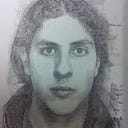Adding Cinematic Realism: Creating the Hand-Held Look on Unity Cameras using Noise
In game development, adding a hand-held camera effect can enhance the realism and immerse players in the game world. Unity offers a powerful tool for achieving this effect through the use of noise. In this article, we will explore how to create the hand-held look on Unity cameras using noise, specifically focusing on the Basic Multi Channel Perlin noise, different noise profiles, and how amplitude and frequency changes contribute to the hand-held camera effect.
Understanding Basic Multi Channel Perlin Noise: Perlin noise is a versatile algorithm that generates natural-looking random patterns. The Basic Multi Channel Perlin noise in Unity combines multiple Perlin noise channels to produce a more complex and dynamic noise pattern. By utilizing this noise, developers can simulate the subtle movements and vibrations experienced when holding a physical camera.
Cinemachine, a virtual camera system in Unity, provides various noise profiles that can be applied to virtual cameras to simulate camera shakes and movements. Each noise profile offers distinct characteristics, allowing developers to achieve different camera effects. Here are descriptions of some common noise profiles available in Cinemachine:
Noise_CM4: Noise_CM4 generates complex and multi-dimensional noise patterns for the camera. It combines different elements of camera shake, including position, rotation, and field of view changes. This noise profile creates dynamic and versatile camera movements, making it suitable for simulating intense and chaotic scenarios, such as action-packed sequences or fast-paced gameplay.
6D Shake: The 6D Shake noise profile simulates six degrees of freedom camera shake, representing movement along the x, y, and z-axis, as well as rotation around the x, y, and z-axis. This noise profile is ideal for creating realistic camera shakes that closely mimic handheld camera movements. It is well-suited for simulating the natural motion experienced when physically holding a camera, adding authenticity and immersion to the gameplay.
Handheld_Normal_Extreme: The Handheld_Normal_Extreme noise profile generates a strong and exaggerated camera shake effect. It simulates the motion of a handheld camera under extreme conditions, resulting in intense and jarring movements. This noise profile is useful for creating high-stress or high-tension scenes, adding a sense of urgency and chaos to the gameplay.
Handheld_Normal_Mild: Handheld_Normal_Mild provides a more subtle and gentle camera shake effect compared to Handheld_Normal_Extreme. It simulates the natural movements of a handheld camera but with a milder intensity. This noise profile is suitable for adding a touch of realism to the camera without being too distracting or overpowering. It can be used in various gameplay situations to create a sense of immersion and cinematic quality.
Handheld_Tele_Mid: The Handheld_Tele_Mid noise profile is optimized for telephoto camera lenses, which have a narrower field of view and magnify distant objects. This noise profile imitates the characteristic movements of telephoto lenses, such as slight zooming in and out and subtle position shifts. It is ideal for creating a handheld telephoto camera effect, often seen in cinematic close-ups or surveillance-style gameplay sequences.
Handheld_WideAngle_Mild: The Handheld_WideAngle_Mild noise profile is designed for wide-angle camera lenses, which have a broader field of view and capture more of the scene. This noise profile replicates the unique movements of wide-angle lenses, such as subtle barrel distortion and gentle positional shifts. It is suitable for creating a handheld wide-angle camera effect, commonly used in environmental exploration and panoramic shots.
In conclusion, Cinemachine offers a variety of noise profiles that cater to different camera effects and gameplay scenarios. By selecting the appropriate noise profile and fine-tuning the settings, developers can achieve realistic camera movements, adding depth, immersion, and a cinematic feel to their Unity projects.
